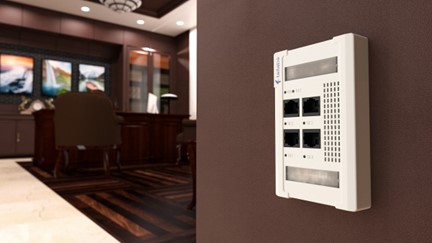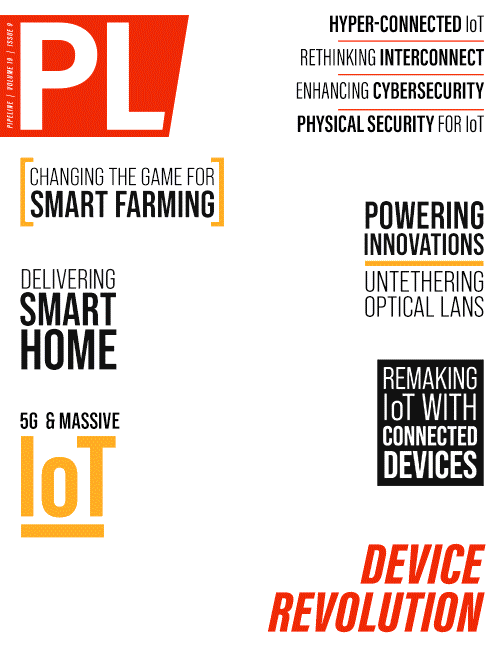Powering Innovations Untether Optical LANs
By: Russ Kulpins

When connecting Smart Buildings and the Internet of Things (IoT), hard restrictions exist related to network power, bandwidth, density, and reach. An electrical signal, whether delivering electricity or data, is bound by physical limitations that in the past were only overcome by making transport media larger, more rigid, harder to work with, shorter, and more expensive. These factors have harsh negative impacts on businesses trying to embrace digital transformation and corporate sustainability goals.
On the bright side, the past decade has ushered in enterprise network progress by prioritizing fiber cabling and taking advantage of Passive Optical Network (PON) design to optimize the underlying architecture for Smart Buildings, IoT, and sustainability initiatives [Figure 1 below]. Fiber cabling has no known bandwidth capacity or connectivity density limitations. Enterprise-based Passive Optical Local Area Networks (LAN) have proven to offer better scalability, security, stability, and sustainability when compared to traditional inbuilding networks. Relative to reach, these passive networks can deliver Ethernet connectivity across 12-mile distances over a reliable infrastructure with no powering and limited human touch.
Up until now, the powering challenges have proven more difficult to overcome, especially as related to Smart Buildings and IoT connectivity demands. With ongoing innovations improving powering
methods for enterprise connectivity, however, Optical LAN benefits can now be fully optimized [Figure 2 on next page]. These new forward-thinking means of powering can be leveraged for
scalability, such as Power over Ethernet, Class 2 Remote Power, Class 4 Pulse Power, and Direct Current (DC) Microgrids, thus untethering Passive Optical LANs.

Figure 1: An Optical LAN design with a remote powered Optical Network Terminal
Power over Ethernet – Power over Ethernet (PoE) allows network cables to carry electricity, enabling devices such as Smart Building and IoT devices to be energized and connected over the same
Ethernet cable. This eliminates separate power cables, simplifies installation, and reduces costs.
First came the PoE standard (IEEE 802.3af), which allowed for 15.4 watts, followed by the PoE+ standard (IEEE 802.3at), offering up to 30 watts of power to the Powered Devices (PD). The latest PoE standard (IEEE 802.3bt) can deliver up to 60 watts of power (Type 3) or 90 watts of power (Type 4) to PDs. PoE is an efficient way to power and connect PDs, however, its reach is limited by the distance an Ethernet signal can travel, which is 300 feet. Optical LAN architecture helps extend that PoE reach, as it is common for the Ethernet ports on the optical-to-electrical media converters, called Optical Network Terminals (ONTs), to support all versions of PoE. PoE-enabled ONTs, connected via up to 12-mile passive networks, can deliver these different levels of



















